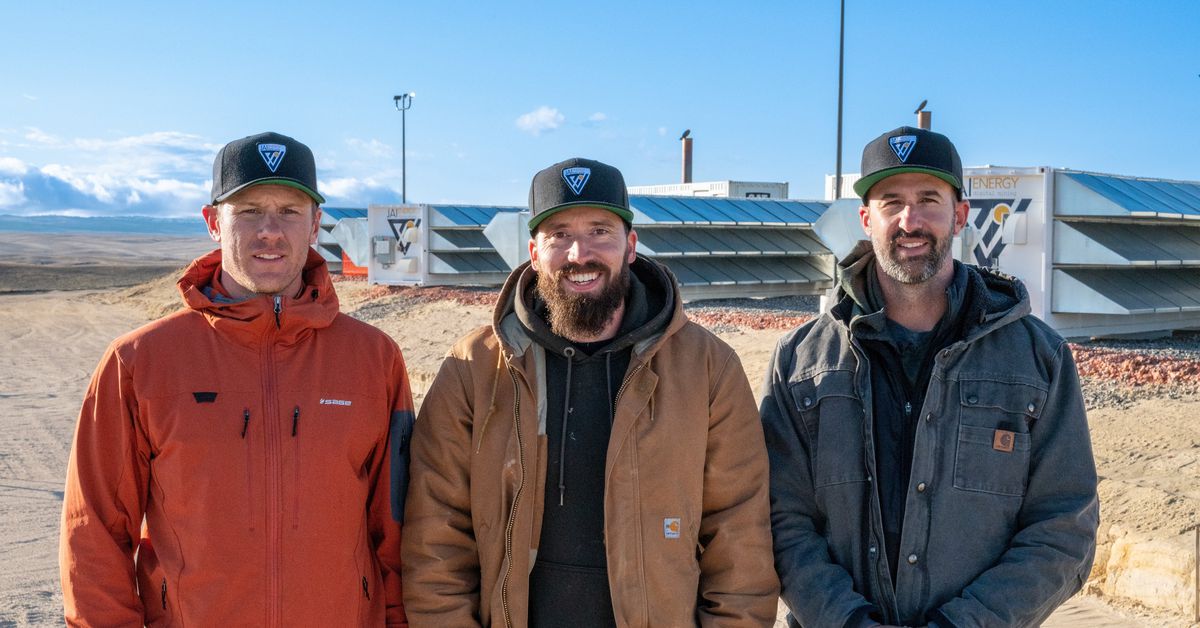Drilling for oil and gas and mining for bitcoin might seem like an odd couple.One is more than 150 years old. The other has existed for a little ov

Drilling for oil and gas and mining for bitcoin might seem like an odd couple.
One is more than 150 years old. The other has existed for a little over a decade. One is a staple of industrial development, squarely grounded in the world of atoms. The other is an innovation of a digital era, financial plumbing for the world of bits. One involves sweaty outdoor work. The other involves a lot of math and abstraction inside cavernous air-conditioned data centers.
If the founders of bitcoin miner JAI Energy are right, the two industries are an ideal match.
Based in Casper, Wyo., (population: 58,446), these oil-and-gas veterans are on a mission to leave no energy stranded. Their thesis is that miners and drillers can solve each other’s problems: The crypto miners get a cheap source of electricity for their power-guzzling computers; the drillers can diversify their revenue sources and not have to waste vast amounts of excess energy produced at their current operations.
“Every oil and gas company in five-10 years from now will have some exposure to mining bitcoin,” Ryan Leachman, a founding partner of JAI, said in a recent interview with CoinDesk.
Read more: How Bitcoin Mining Works
Drilling and producing oil and gas has been plagued by a lack of infrastructure to transport the fossil fuels. After drilling in Wyoming and encountering that obstacle, Leachman and fellow JAI founding partner Justin Ballard turned to bitcoin mining to reduce so-called flaring of natural gas, as state regulations would have otherwise required them to close their drilled oil and gas well.
Flaring natural gas
Flaring of natural gas, where the excess gas is burned if encountered while drilling for fossil fuels, has become a standard industry practice because of the lack of transportation infrastructure. The process is under environmental scrutiny and U.S. President Joe Biden has pledged to cut methane emissions from oil and gas operations, at a time when investors are increasingly prioritizing climate-friendly companies in their portfolios.
A scenario of net-zero emissions by 2050 requires all non-emergency flaring to be eliminated globally by 2030, resulting in a 90% reduction in flared volumes by 2030, according to the International Energy Agency (IEA).
JAI’s “digital flare mitigation,” or using flared gas to power bitcoin mining, could be one way to help address the environmental concerns regarding the burning of natural gas.
To reduce the amount of gas burned, Leachman and Ballard in 2019 switched gears to form a bitcoin mining operation where they capture the flared gas, convert it to electricity and use it to power mining rigs. At its 12-acre mining farm in Wyoming, JAI mines bitcoin for itself and hosts machines for energy companies that may want to mine for bitcoin using excess flared gas. JAI also provides products and services for companies to capture their excess energy.
Read more: Bitcoin Mining Is Reshaping the Energy Sector and No One Is Talking About It
Now, Leachman and Ballard are expanding to Texas. The Lone Star State offers competitive rates for power, and JAI’s founders know the state well from their oil and gas days. One of JAI’s larger-scale projects in Texas will be “on-grid” as opposed to off-grid, meaning they will be drawing power from the electrical grid rather than from sources such as excess natural gas or solar power.
“Ultimately, we are trying to set ourselves up with sites that have the lowest power costs with an ability to continue to scale and grow our company,” Leachman said.
Bitcoin energy use in Texas
Texas has been at the forefront of grid and power concerns after the state experienced harsh winter storms earlier this year that prompted electrical outages. Even some bitcoin miners had to go offline. Texas Sen. Ted Cruz spoke at a blockchain summit in Austin last month, where he touted the benefits of having bitcoin miners on the grid as a source of interruptible load.
Bitcoin miners can aid “demand response” programs, which refers to formal or informal agreements to curtail demand when the grid is overtaxed and prices are high, CoinDesk reported last month following the summit. Bitcoin miners can also adjust their consumption to a level demanded by a grid operator during certain periods. Critics argue that merely adding new demand to the grid won’t solve Texas’ power problems.
However, Crusoe Energy, which is another firm that provides digital flare mitigation systems, thinks that bitcoin miners, renewable energy providers and grid operators have a chance to coexist, highlighting one of the company’s upcoming Texas projects that has connections to local power grids.
“In this setup, what we’re able to provide the renewable power generation company is a curtailable load resource,” CEO Chase Lochmiller told CoinDesk in an interview. “So we can actually curtail the draw of our machines during moments of peak power demand, and then we can consume all of the power during off-peak…
www.coindesk.com
